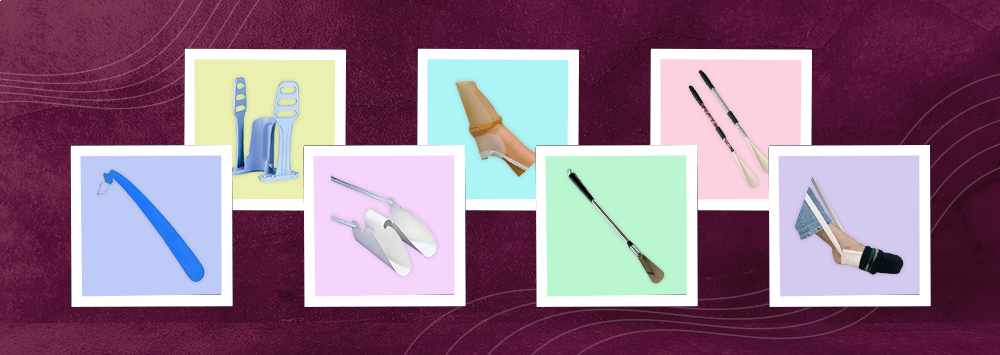
Shoulder to Toe Warmth and Independence
Sally Madeley-Carr, OT24 Nov 2022
Having cold feet can be a result of needing access to more heat, or an indication of poor circulation, the latter leaving the whole body wanting more warmth to feel well.
Reducing exposure to the cold may mean trying to trap heat to warm up the body in the cold months of the year.
Affordable ways of keeping warm may include woolen socks, thermal clothing, woolen jumpers, thick trousers, hot water bottles, and extra blankets, as well as winter duvets and electric blankets.
Having occasional cold feet is normal but having cold feet regularly is something that you should look into.
Normal Coldness
Wrapping up (wearing more layers) is sometimes all that is needed to feel snug again. Keeping the whole body warm is what to aim for.
- - Socks
Normally, our toes feel the cold first. Toe warmers and socks are a good first port of call.
Toe warmers give an extra layer of comfort to your toes and come as items that can be positioned onto the top of your socks to maintain heat.
A good quality sock is much more important than more layers of socks. Wool, especially merino wool, is a good choice of material for keeping warm, as this wool easily absorbs heat and doesn't absorb sweat. In contrast, cotton's breathable quality does not retain heat in the same way.
For people who may have reduced dexterity, a sock aid is a tool that can make getting socks on still an independent task.
Sock aids are designed to help those with a limited range of movement and dexterity to be able to both put on and remove socks independently.
- - Thermal Clothing
Thermal underwear is a heat-retaining fabric worn under your daytime clothes, which holds your own body heat close to your skin. Though somewhat more expensive than other thermal materials, merino wool offers protection in all weather temperatures and rests comfortably on the skin.
The length of a thermal vest should be long enough to tuck into your lower garments, so as to prevent heat from escaping and prevent draught from entering.
Thermal socks and thermal gloves can keep the extremities warm and thus keep the body temperature on par with an overall desired body temperature.
- - Quality Clothing
Woollen jumpers and thicker trousers can help retain heat on cold days which, when teamed with thermal underwear, can help keep the body at a comfortable temperature. Paying a little more for quality clothing does eventually reap benefits.
- - Hot Water Bottles
Hot water bottles are an old favorite. These rubber or thermoplastic bottles can keep you warm during the day and warm your bed at night. This is an inexpensive way of maintaining body temperature and can most certainly help you fall asleep at night. Heated gel pads can also be used to direct heat to a particular area of the body or bed.
- - Blankets and Duvets
Duvets have long since replaced ordinary bed blankets and make for a snug bed at any time of the day, as well as being lighter on the body than heavier blankets.
Different tog measurements provide comfort in warm seasons (e.g. tog 2.5 to 7) and in cold seasons (e.g. tog 10.5 to 13.5). Waterproof duvets give added security for people with incontinence.
- - Electric Blankets
Electric blankets come as either over blankets (which go over the body) or under blankets (which attach to the mattress under the bed sheet).
Consider switching the electric blanket off when you get into bed, as your body temperature will take on that heat and help you maintain a comfortable temperature whilst sleeping.
Some electric blankets do come with fitted control buttons and timers, making them easier to adjust when in bed.
Ageing
Ageing brings about a more sedentary lifestyle and sitting down for long periods can put pressure on blood vessels, which can hinder blood flow. Blood will remain in your legs and feet and so limit the flow of oxygen and nutrients around your body.
Increasing age could also bring on less flexible blood vessels which, in turn, can lead to poor circulation and difficulty for the body to retain heat.
Moving around is really important for vein health and for maintaining good circulation.
Symptoms of Poor Circulation
A variety of symptoms can indicate poor circulation. These include:-
- - a pins and needles sensation
- - cold fingers or toes
- - numbness
- - muscles that hurt when you walk
- - swelling
- - veins that bulge
- - paler of blue skin colour
- - chest pain.
These same symptoms could indicate other health conditions, which is why it is worth chatting with your GP as soon as possible, to rule out other health concerns and handle your needs promptly and effectively.
Compression Socks
If poor circulation is an issue for you, your GP may recommend compression socks.
Compression socks apply pressure to the lower leg, increasing the pressure in the tissues beneath the skin so as to reduce discomfort and swelling which, in turn, helps maintain blood flow.
Whereas a regular sock fits loosely around the ankle and foot, a compression sock fits tightly, so as to apply pressure.
It is best to put compression socks on first thing upon rising, as swelling will be less of a problem before walking or sitting down.
When wearing compression socks, warmth and a tingling sensation indicates that your blood circulation is improving and blood flow is returning from your feet to your heart.
Compression socks can sometimes be difficult to put on, so a sock aid proves a useful tool in making this job easier. Applying talcum powder to dry skin also gives the sock a smoother upward ride into position.
Compression socks can be worn twenty-four hours a day, unless your GP states otherwise, as some health conditions could be adversely affected by applying such prolonged pressure.
Compression Sock Aids
Compression sock aids come in different sizes and are also of use to people with arthritis, as they make the task of getting socks on and off a less strenuous task.
Whilst the sock aid is still in place, make sure that your sock is fitting comfortably on your foot and around your ankle, before coaxing the sock further up your leg.
Socks On and Shoes to Follow
Some designs of sock aid offer a shoehorn at the other end of the tool, again contributing to comfort and independence. However, for the individual with weakened dexterity and movement, a long handled shoe horn comes up trumps in the independence zone.
Long-handled shoe horns reduce bending and straining by giving a longer reach of around 16 inches (40 cm.) and support both putting on and removing shoes.
SUMMARY
We all need more warmth in the coldest of times.
When a person's blood is not circulating efficiently, hands and feet lose heat, as the blood vessels direct the main body heat to vital organs.
If your feet are cold, lie down and lift your feet and legs to a height above your heart level for about twenty to thirty minutes, so as to help with blood circulation.
Socks should never be so tight that they hinder blood flow.
Compression socks can be worn twenty-four hours a day, unless your GP advises otherwise, as some health conditions can be adversely affected by applying such pressure.
For individuals with weakened dexterity and movement, and for people with arthritis in their joints, a long-handled shoe horn makes dressing one's feet for the day an easier task.

Sally Madeley-Carr, OT
Sally qualified as an Occupational Therapist in 1996 and is a well-respected professional in the field of rehabilitation equipment and living aids. She has worked in private practice and within the NHS, developing a broad experience with adults and children. Click here for Sally's registration with the Health and Care Professions Council. The HCPC regulates health, psychological and social work professionals in the UK.